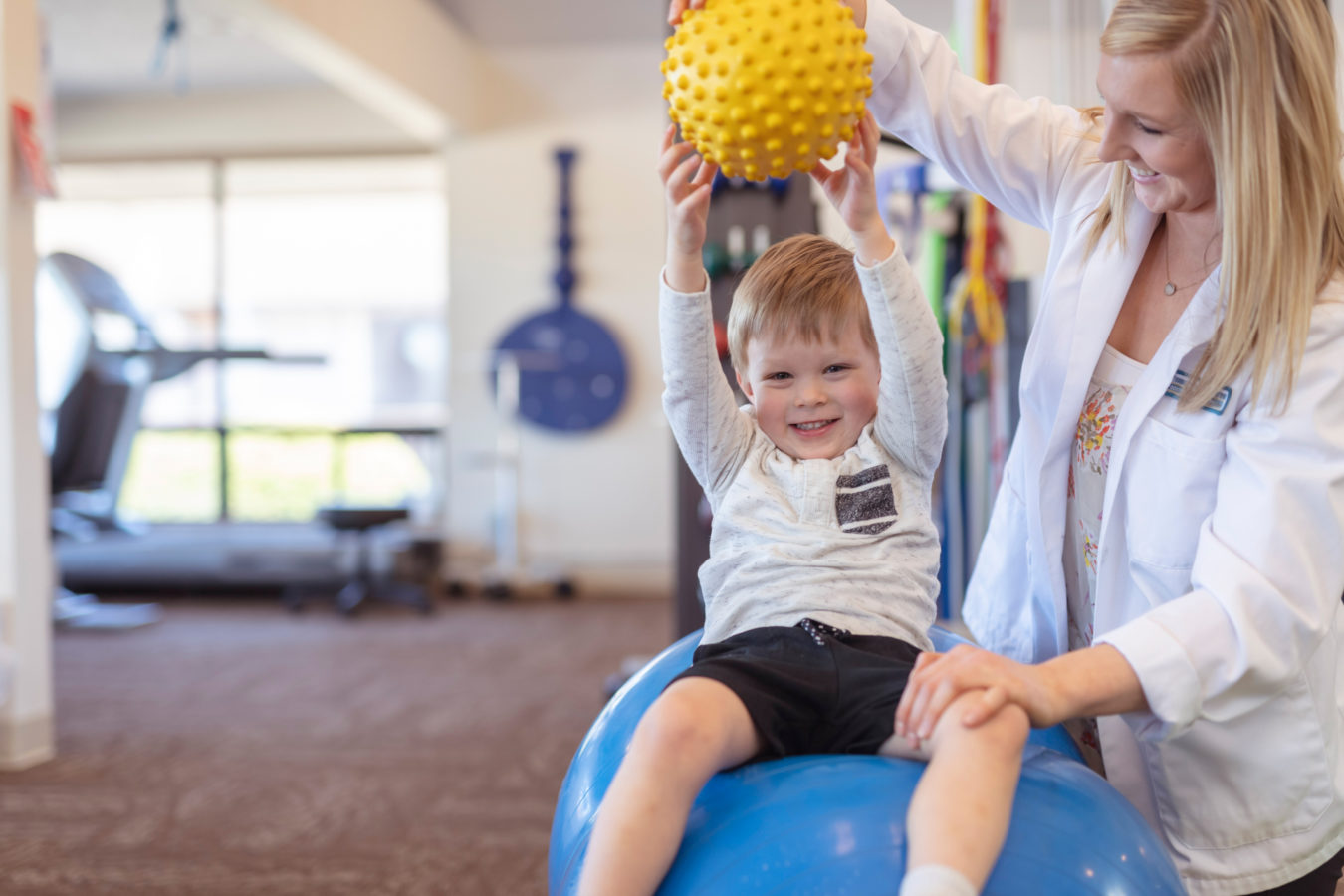
We help children of all ages and their families reach their potential with pediatric physical, occupational, and speech therapy.
Pediatric therapists support families by helping children develop the skills and mobility they need for independent functioning. Pediatric therapy treatment may include motor control and motor learning, neurodevelopmental treatment, manual therapy, strengthening, taping techniques, gait training, and aquatic therapy.


As your child’s parent or primary caretaker, you play an active and important role in their pediatric physical therapy program. You’ll learn how therapy techniques facilitate your child’s developmental progress. You’ll also learn how to adapt certain toys to enhance your child’s therapy needs, learn how to use therapeutic equipment correctly, and maintain regular communication with your child’s physical therapist.
*Services are not available at every location. Visit our Locations page for more details.